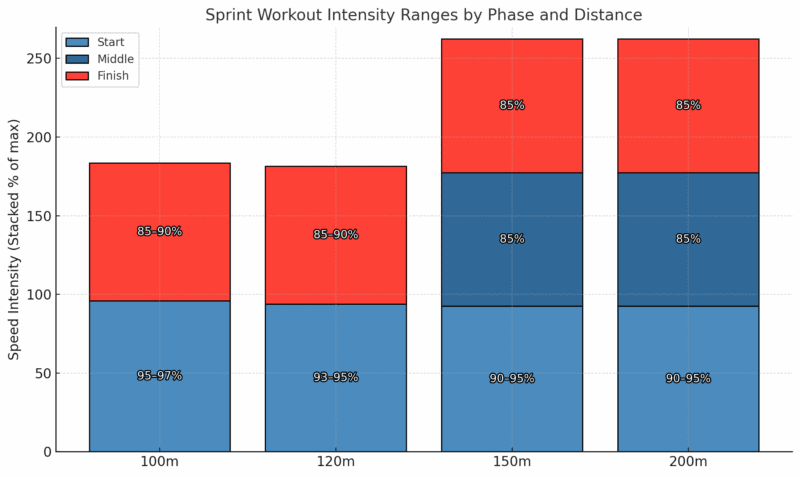A high-intensity sprint workout will hurt you. Real bad.
Most sprinters do not enjoy them, especially the barbaric special endurance workouts. I was first introduced to these speed and special endurance workouts in my freshman year of college. In my first year at East Stroudsburg University, I got my then-skinny carcass kicked from pillar to post.
Lessons Learned
As a freshman, I was out of shape and unprepared. I used to detest those track workouts. But those feelings of dislike hid my real issue. I didn’t like it when the workouts exposed my lack of conditioning at practice. I was prideful and blamed everything but the young man in the mirror for my failures. That’s the definition of fake hustle.
When I returned at age 31 as a master’s sprinter, my mindset had shifted. I anticipated the tough workouts. I realized that if I performed better in practice, I would do better in competitions.
The commitment to those workouts showed up during the 2017 master’s outdoor season. I ran a 23.78 in the 200m at age 33. I ran a 24.16 in the 200m during the 2016 season. I was significantly faster in 2017 than in 2016.
What Are Speed And Special Endurance Workouts?
A sprinter’s track workout usually has three types.
• Speed: Workouts for pure speed focus on acceleration or max velocity. They usually happen in the 10 to 50-meter range. These are done at 90-97 percent of your maximum speed in these sessions.
• Speed Endurance: Workouts for speed endurance typically take place in the 80 to 150-meter range. You will be sprinting at 85-95 percent of your maximum speed in these sessions.
• Special Endurance: Workouts for special endurance usually happen in the 150 to 500-meter range. This depends on whether you’re a 200 or 400-meter sprinter. These are performed at 85-90 percent of your maximum speed in these sessions.
A sprinter must use all three training styles to get the most out of their performance. You will decide where you spend most of your time training based on the races you run and the weaknesses you have. A sample speed endurance workout involving the 150-meter dash would look like this:
• Sprint the first 40 to 50 meters (90-95 percent speed).
• Float the next 60 meters (85 percent speed).
• Try to “accelerate” the final 40 to 50 meters.
Floating Explained
Floating happens when you stop trying to speed up. Instead, you relax into the pace you’ve reached after 30 to 50 meters. The final acceleration is not you actually speeding up into a faster gear. It’s really just you trying to stop your body from slowing down.
Full Sprint Workout
On September 19th, 2020, my brother Joe and I did a classic track workout. It focused on speed and special endurance for sprinters. This workout is ideal for 200–400m sprinters who need more top-end speed, stamina, and mental grit. The workout looks like this:
• 1 x 100 meters
• 1 x 120 meters
• 1 x 150 meters
• 1 x 200 meters
The general race plan for the 100 and 120-meter sprints is:
1) Start: 95-97% speed for the first 30 to 40 meters.
2) Finish: Float at 85–90% for 70–80m.
3) Rest 8-10 minutes in between the reps.
The general race plan for the 150 and 200-meter sprints is:
1) Start: 90–95% speed for the first 40 to 60 meters.
2) Middle: Float at 85–90% for 60–80m.
3) Finish: Hold 85% for final 50–60m.
4) Cooldown after the final rep.
You must keep in mind that all your speeds are relative based on where you are in the workout. Your 95 percent speed on your 1st rep and your 4th rep could be slower by a few tenths or hundredths.

Workout Notes:
• Perform a sprinter warm-up before you begin this workout. Skimping on your warm-up increases the chances that you will blow out a hamstring.
• Rest 8-10 minutes between reps. You will need a full recovery to maximize your sprinting performance.
• If you want accurate, unbiased times, get the Freelap Timing System. If you are unable to invest in Freelap, you can use a stopwatch. But be aware that the times will not be as accurate due to human error.
• If you are out of shape, this sprint workout will punish you real bad. But you must stick with it so that you can dominate your competition on the track.
• This was my first sprint workout since recovering from a grade 2 hamstring tear in 2019. I felt and looked rusty, but it felt amazing to be back in the sprint game. I’m grateful for better health.
Conclusion
If you’re not ready to suffer sometimes in practice, you’re not ready to shine on race day. You can’t get to the mountaintop without facing some adversity.
I’ll holla at you next time.
The People’s Trainer,
Fitman


